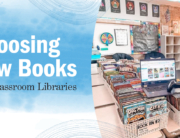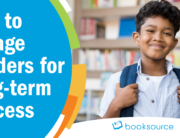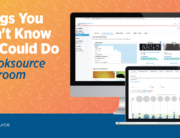What do you wish you had been told at the beginning of your teaching career?
I started teaching 45 years ago … And, what a wonderful journey it has been. At the onset of my career, I was full of energy, eager to work with children and lucky enough to have a mentor who knew how to create child-centered environments where children could operate as partners in their own learning. But I foolishly launched my first classroom by putting a ton of energy into “decorating” the environment, thinking of what looked nice rather than what would facilitate learning. I worked endless hours that in retrospect did not directly relate to advancing learning or student independence. It took the birth of my first child to cause me to stop and reconsider, to look at how to get the most learning value from each precious moment of time. Here are a few things I wish I had known:
1. Focus on engagement in every time segment of the day.
Choose turn and talks over hand-raising, explore topics that are of interest to the students and provide hands-on learning whenever possible. Launch units of study with a great read aloud followed by a vigorous collection of student-generated questions to fuel inquiry. Elevate engagement by ensuring experiences are purposeful and authentic. Always include time for partner sharing, real audiences and as much student independence as possible.

2. Never forget that volume counts.
A focus on the number of minutes spent reading real books and writing real messages every day is essential to accelerating development and building life-long literacy behaviors. Strip away word searches, study guides and “activities” that soak up precious minutes that could have been spent reading.
3. Set high standards and believe in the children.
There is ample proof now that high expectations and plenty of support are key elements of student reading success. Build your teaching life around “they can” rather than “they can’t.”
4. Teach strategies—not books.
Treat the content or the story with care, but remember they are not the end goal. The goal is to empower learners to carry the literate behaviors across many books and many experiences. When you focus on strategies and demonstrate their use across the curriculum, you open eyes, minds and hearts to unexplored worlds.
5. Model, model, model.
Never ask learners to do something they haven’t seen you do first. Demonstrate and think aloud as you go, show students how to approach learning tasks, how to integrate craft into their writing, how to read with expression and how to turn facts into interesting sentences. Let your demonstrations fuel the fire of new learning.
6. Foster curiosity.
Don’t just teach—ignite a sense of wonder. Help kids discover the power and excitement that can be an essential part of learning. Investigate topics that kids find interesting, teach research skills from kindergarten forward and don’t try to be an expert. Instead, open your heart and celebrate opportunities to learn new things with your students. Listen, engage in growing with your learners and master statements like: I don’t know the answer to that. How might we find an answer?
7. Ensure balance between fiction and nonfiction experiences.
Be sure that reading and writing experiences offer a careful balance between fiction and informational learning. In addition, the classroom library should be crafted to ensure kids read widely, from many different genres, and on many different topics. Independent reading and read alouds in particular should offer a minimum of 50 percent fiction and 50 percent nonfiction.
8. Never stop learning.
Remember that the status quo makes innovation impossible. Embrace your own role as a learner by being a voracious professional reader. Focus on reading the work of varied professionals in your field and attend conferences where you can learn, network and continue to grow as a professional. Every day strive to be a better teacher than you were yesterday.
Linda Hoyt








Leave A Comment